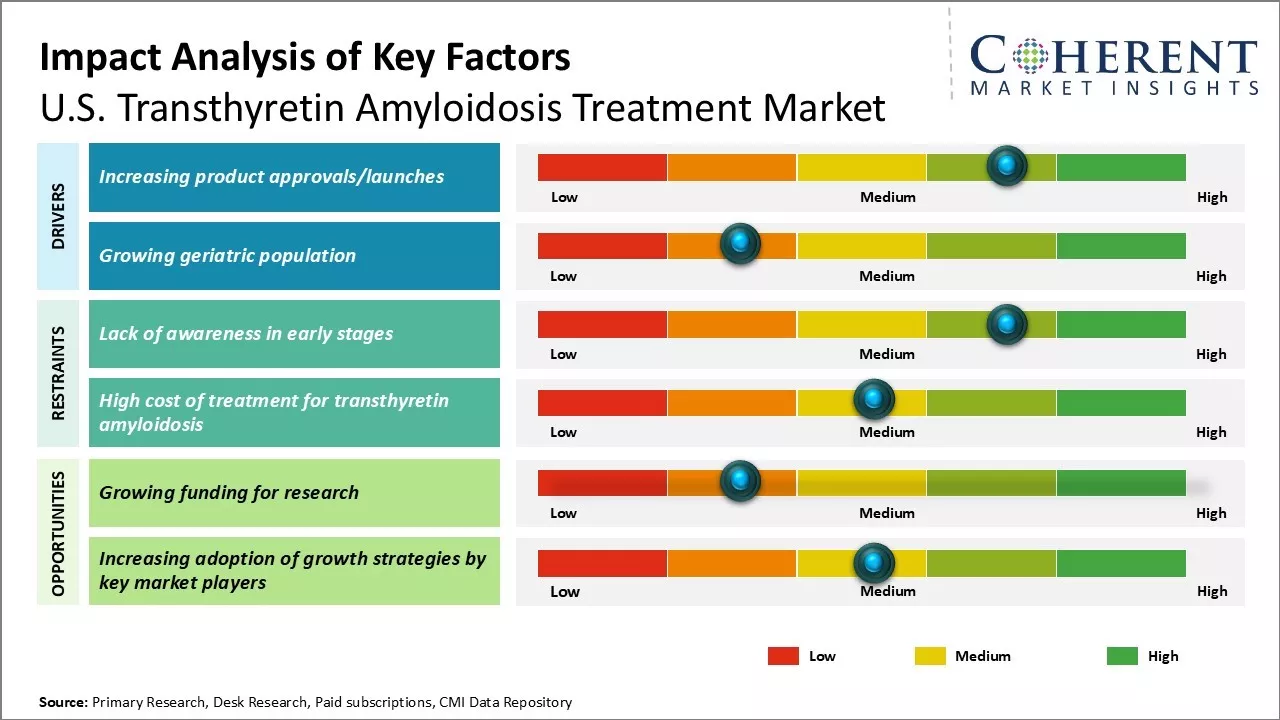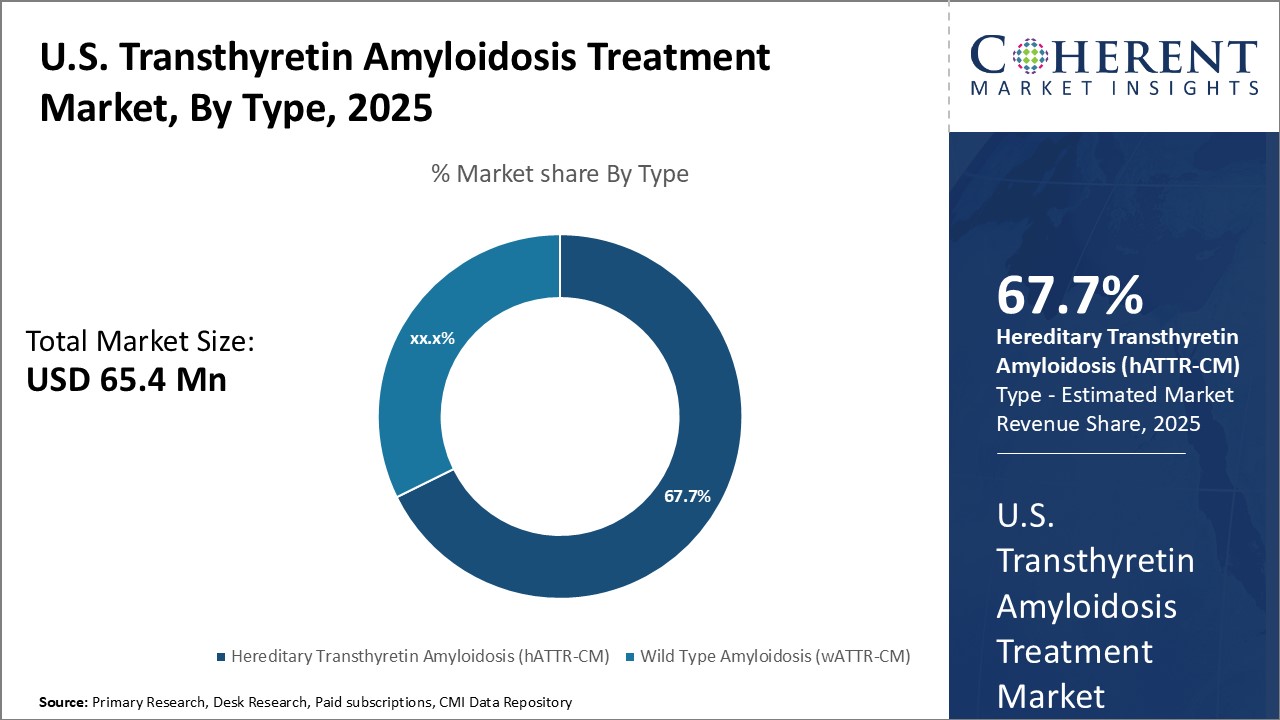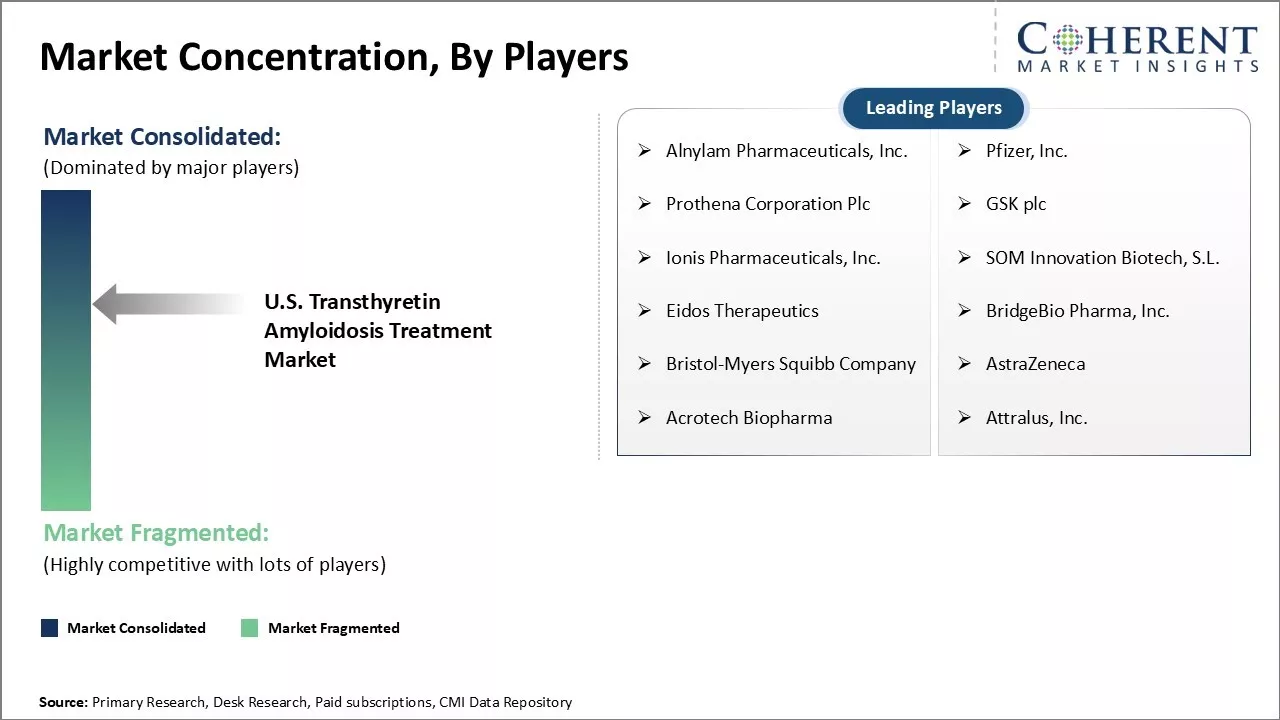The U.S. transthyretin amyloidosis treatment market is estimated to be valued at USD 65.4 Mn in 2025 and is expected to reach USD 124.4 Mn by 2032, exhibiting a compound annual growth rate (CAGR) of 9.6% from 2025 to 2032.

Discover market dynamics shaping the industry: Download Free Sample
Increasing research and development efforts aimed at innovative treatments, alongside heightened collaborations between pharmaceutical companies and research institutions for clinical trials, are crucial in boosting demand for transthyretin amyloidosis treatment. Additionally, awareness initiatives led by non-profit organizations and support groups are expected to propel market growth. However, challenges such as the scarcity of approved drugs and high costs associated with treatment may hinder this growth trajectory in the coming years.

Discover high revenue pocket segments and roadmap to it: Download Free Sample
Insights By Type - Genetic factors drive demand for wild type amyloidosis (wATTR-CM)
In terms of type, wild type amyloidosis (wATTR-CM) segment is estimated to contribute the highest market share of 67.7% in 2025 due to increased awareness and diagnosis. There has been a significant increase in awareness regarding transthyretin amyloidosis, leading to improved diagnostic rates. Enhanced understanding among healthcare professionals and the public about the symptoms and risks associated with wATTR-CM facilitates earlier diagnosis and treatment initiation.
Insights By Drug Type - Novel drug approvals drive Tafamidis segment growth
In terms of drug type, tafamidis segment is estimated to contribute the highest market share of 39.8% in 2025 being the first FDA-approved treatment for hATTR amyloidosis. Its oral administration enhances patient compliance, while clinical evidence shows it stabilizes neurological function and reduces mortality. Patent protection until 2030 further secures its market position and encourages rapid adoption among healthcare providers.
Insights By Distribution Channel – Hospital’s expertise drives distribution through hospital pharmacies
In terms of distribution channel, hospital pharmacies segment is expected to contribute the highest market share of 48.7% in 2025 attributed to hospital’s expertise in managing complex cases of transthyretin amyloidosis. These specialized centers provide comprehensive care through interdisciplinary teams, facilitating integrated diagnostics and treatment options. The need for in-patient care during disease exacerbations further consolidates procurement through hospital pharmacies, enhancing their market position.

Get actionable strategies to beat competition: Download Free Sample
Top Strategies Followed by the U.S. Transthyretin Amyloidosis Treatment Market Players
Emerging Startups in the U.S. Transthyretin Amyloidosis Treatment Market
Key Takeaways from Analyst
U.S. Transthyretin Amyloidosis Treatment Market Report Coverage
| Report Coverage | Details | ||
|---|---|---|---|
| Base Year: | 2024 | Market Size in 2025: | USD 65.4 Mn |
| Historical Data for: | 2020 To 2024 | Forecast Period: | 2025 To 2032 |
| Forecast Period 2025 to 2032 CAGR: | 9.6% | 2032 Value Projection: | USD 124.4 Mn |
| Segments covered: |
|
||
| Companies covered: |
Alnylam Pharmaceuticals, Inc., Pfizer, Inc., Prothena Corporation Plc, GSK plc, Ionis Pharmaceuticals, Inc., SOM Innovation Biotech, S.L., Eidos Therapeutics, BridgeBio Pharma, Inc., Bristol-Myers Squibb Company, AstraZeneca, Acrotech Biopharma, and Attralus, Inc. |
||
| Growth Drivers: |
|
||
| Restraints & Challenges: |
|
||
Uncover macros and micros vetted on 75+ parameters: Get instant access to report
Market Driver - Increasing product approvals/launches
With the rising prevalence of transthyretin amyloidosis, pharmaceutical companies are intensifying efforts to develop novel treatments. In December 2023, Ionis Pharmaceuticals, Inc., a pharmaceutical company, and AstraZeneca, a global biopharmaceutical company, announced that the U.S. Food and Drug Administration (FDA) approved Ionis and AstraZeneca's WAINUA (eplontersen) for the treatment of the polyneuropathy of hereditary transthyretin-mediated amyloidosis in adults, commonly referred to as hATTR-PN or ATTRv-PN.
Market Challenge - Lack of awareness in early stages
One of the key challenges in the U.S. transthyretin amyloidosis treatment industry is the lack of awareness about the disease in its early stages. Transthyretin amyloidosis is often misdiagnosed in its early stages due to vague symptoms, leading to delayed treatment and irreversible damage. Raising awareness among healthcare providers and the public about early signs is essential for timely intervention. Implementing educational initiatives and screening programs can significantly improve early detection and health outcomes for at-risk populations.
Market Opportunity - Growing funding for research
Growing funding for research presents a key opportunity in the U.S. transthyretin amyloidosis treatment industry. Increased financial support from government and private organizations aims to enhance understanding of the disease's pathogenesis and develop advanced diagnostics and therapies. This investment has already led to the U.S. Food and Drug Administration approvals for multiple disease-modifying drugs, with promising candidates in the pipeline expected to improve treatment efficacy and patient outcomes.
Share
Share
About Author
Ghanshyam Shrivastava - With over 20 years of experience in the management consulting and research, Ghanshyam Shrivastava serves as a Principal Consultant, bringing extensive expertise in biologics and biosimilars. His primary expertise lies in areas such as market entry and expansion strategy, competitive intelligence, and strategic transformation across diversified portfolio of various drugs used for different therapeutic category and APIs. He excels at identifying key challenges faced by clients and providing robust solutions to enhance their strategic decision-making capabilities. His comprehensive understanding of the market ensures valuable contributions to research reports and business decisions.
Ghanshyam is a sought-after speaker at industry conferences and contributes to various publications on pharma industry.
Missing comfort of reading report in your local language? Find your preferred language :
Transform your Strategy with Exclusive Trending Reports :
Frequently Asked Questions
Joining thousands of companies around the world committed to making the Excellent Business Solutions.
View All Our Clients